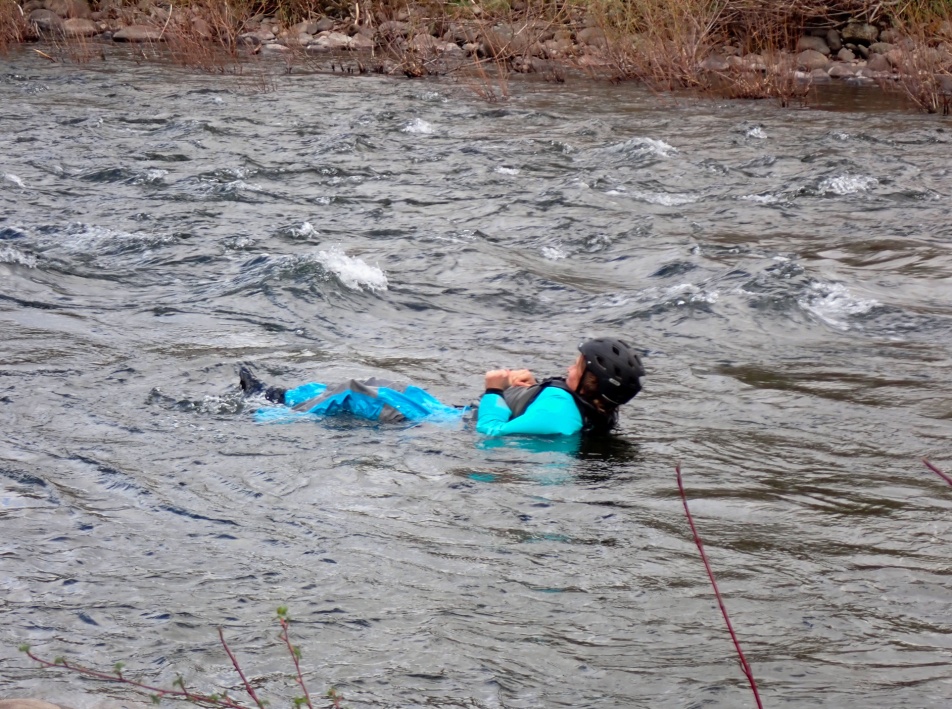Foot Entrapments
Foot Entrapments
Safety Awareness: Avoiding Foot Entrapment
Originally Submitted by Bruce Ripley
Revised by Scott Harvey
On land, when you are in an emergency situation, your
survival instinct is usually to stay on your feet so you’re
prepared to maneuver out of the danger. When you’re in
the water in an emergency, that same instinctive reaction
can lead to one of the most deadly accidents: foot entrapment.
Safety Rule: Never stand up or put your feet down in the water, unless the water
depth is below your knees or the water is calm.
Sometimes swimming is unavoidable, but staying calm, working to self-rescue and
remembering this basic rule can usually keep you out of trouble. You can’t clearly see what’s under the water. Rocks, logs and other obstacles can be waiting there to trap a dangling foot. When this happens in moving water, there usually isn’t time to remove the foot. The current pushes the swimmer down, often holding their head underwater and usually resulting in a drowning. Having on a usually doesn’t save you; the force of the water can overwhelm that flotation. Saving someone in this situation is very difficult and rarely successful. You have only a very few minutes to reach a person whose head is under water. Sometimes a line stretched across the stream can help support the
victim’s head above water until a rescue to remove the foot can be made. This technique, along with wading out to the victim assisted by a paddle or with the help of other boaters, is illustrated and explained in the Whitewater Rescue Manual by Walbridge and Sundmacher and in Swiftwater Rescue classes. These are advanced techniques that are best learned and practiced while taking a swiftwater rescue class under controlled conditions. As with most accidents, prevention is the best solution.
However if you find yourself in the water there are ways to reduce your risk:
1. If you are injured, or in immediate danger from a rapid then it may be best to assume the “swimming safety position” (See photo below) . This allows you to look downstream and
push off any rocks or other obstacles with your feet. You can backstroke at an angle
to the current and work your way to shore or into an eddy.
2. If you are able the best alternative is to aggressively self rescue. Many times this
will mean that you should roll onto your stomach and swim aggressively to safety. This is especially important if there is a known strainer downstream. Safety may include your boat, an eddy, or the shore. Once you are safe you will be able to better evaluate your situation. The most important thing to remember is that by keeping your feet near the surface you are less likely to have a foot entrapment. Once you are in relatively calm, shallow water let you hands find the bottom first, followed by your feet and let your
body settle into a squat. Once in that position you should be able to safely exit the water. Should you suffer a foot entrapment the most important thing is to stay calm and indicate that you need help as soon as possible. By staying calm and recruiting
help you will greatly increase your chances of getting out of the situation unharmed.
The dangers of foot entrapments should be a part of every pre-launch safety talk.
* Thanks to NRS and www.NRSWeb.com for providing portions of this content.

Swimming safety position: on back, feet up,
head up, knees slightly bent.
Finish the Trip Report






